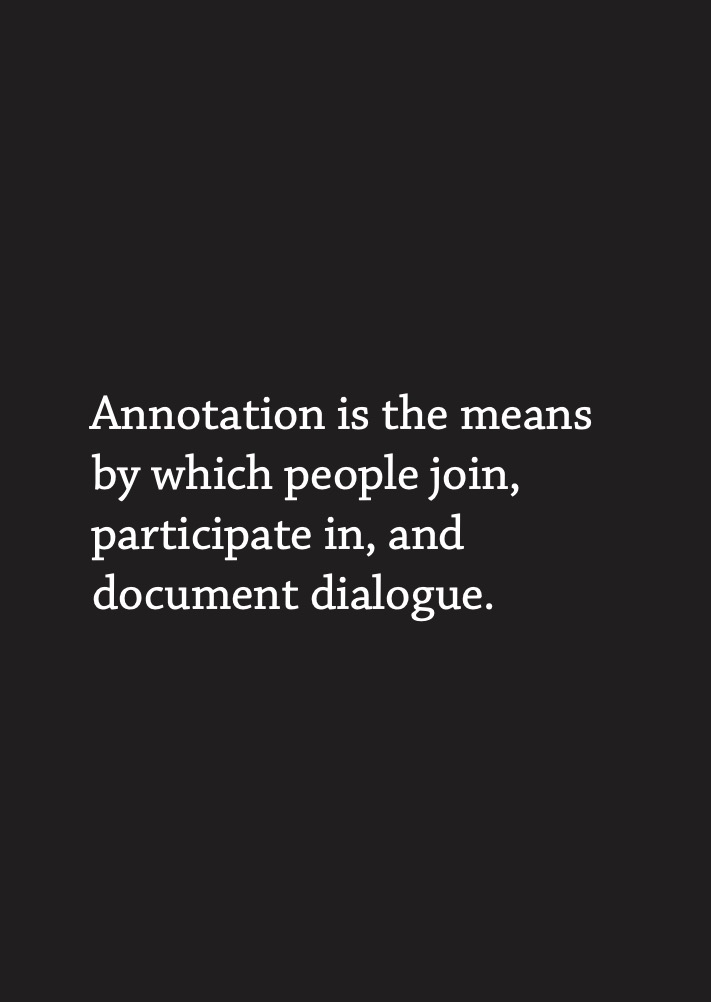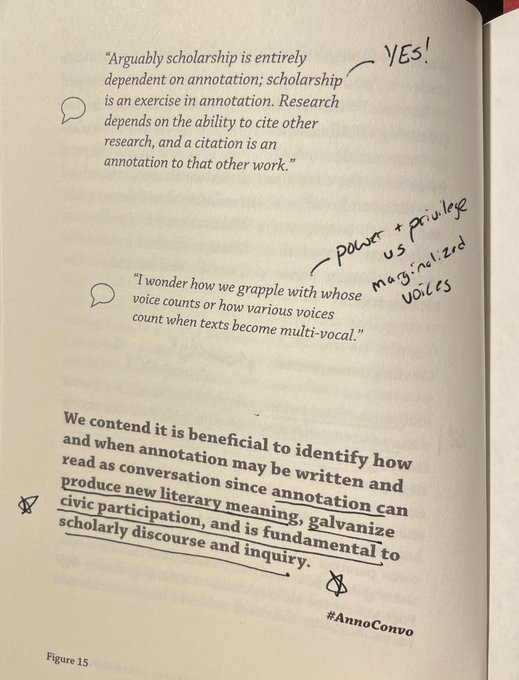This volume in the MIT Press Essential Knowledge series is an introduction to annotation as a genre—a synthesis of reading, thinking, writing, and communication—and its significance in scholarship and everyday life.
IndieBound | Amazon | MIT Press
Reviews
“Put Annotation on your summer-reading list. Spur a conversation with colleagues in your department about annotation and creative ways to use it as a teaching tool.”
James M. Lang, “Annotate This: How a Common Academic Practice Can Boost Learning,” Chronicle of Higher Education
“Very importantly, Kalir and Garcia point to the possibilities for annotation becoming part of a more democratic and open information infrastructure. If you are interested in open scholarship but don’t know where and how to start, this book might be one place to get into the topic (and conversation).”
Pat Thomson, “Everyday Annotation,” patter
“The book gave me some new lenses through which to think about this practice. Whether you’re a reading geek or not, Annotation is a quick read that should spark your thinking in some new directions.”
Scott McLeod, Dangerously Irrelevant
“The collaborative and open structure of this book, which is also a work in progress, will certainly bring many other questions to the fore, and it is the great merit of Kalir and Garcia to have written a book that will be actively annotated and creatively superseded by many readers.”
Jan Baetens, Leonardo
Resources
Scholarly Annotation in LSE Impact Blog
Included in “20+ Must-Read Books for Every Teacher to Teach Better,” Abakcus
Mentioned by the Washington Post in “On Instagram and TikTok, Annotating Books is an Art“
Public Slide Deck & Book Preview
Book Description
Annotation—the addition of a note to a text—is an everyday and social activity that provides information, shares commentary, sparks conversation, expresses power, and aids learning. It helps mediate the relationship between reading and writing. This volume in the MIT Press Essential Knowledge series offers an introduction to annotation and its literary, scholarly, civic, and everyday significance across historical and contemporary contexts. It approaches annotation as a genre—a synthesis of reading, thinking, writing, and communication—and offers examples of annotation that range from medieval rubrication and early book culture to data labeling and online reviews.
After introducing such ideas as paratext, multimodality, and intertextuality, the authors discuss the affordances and types of annotation in a variety of contexts. Annotation that provides information, for example, can be a time stamp on a text message or a footnote to a text; annotation that shares commentary can be praise (or the opposite) on Rate My Professors or the texts in the Hebrew Talmud; and annotation that aids learning can be added by experts for students or by students for their peers. Far from being an arcane practice of scholars, annotation allows readers to respond to their texts, interact with various forms of media, and make meaning with and from this everyday activity.




